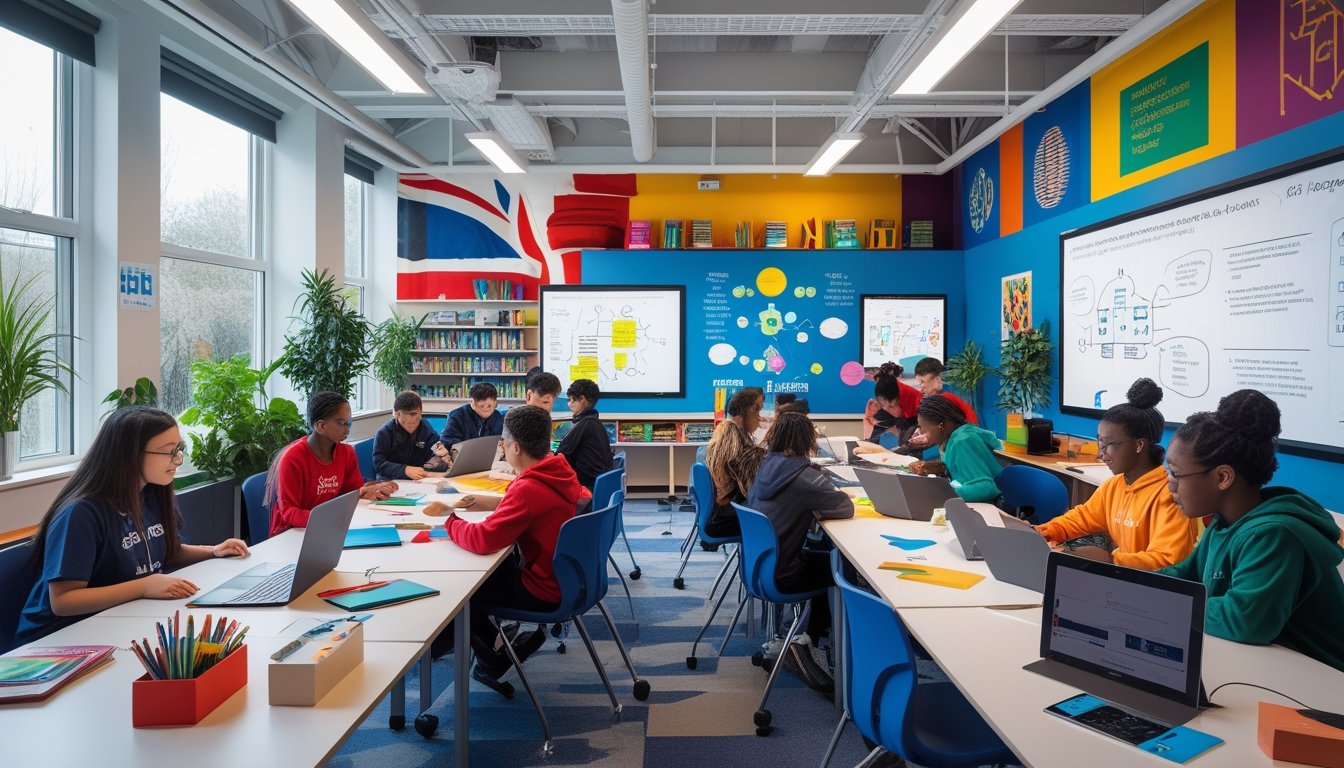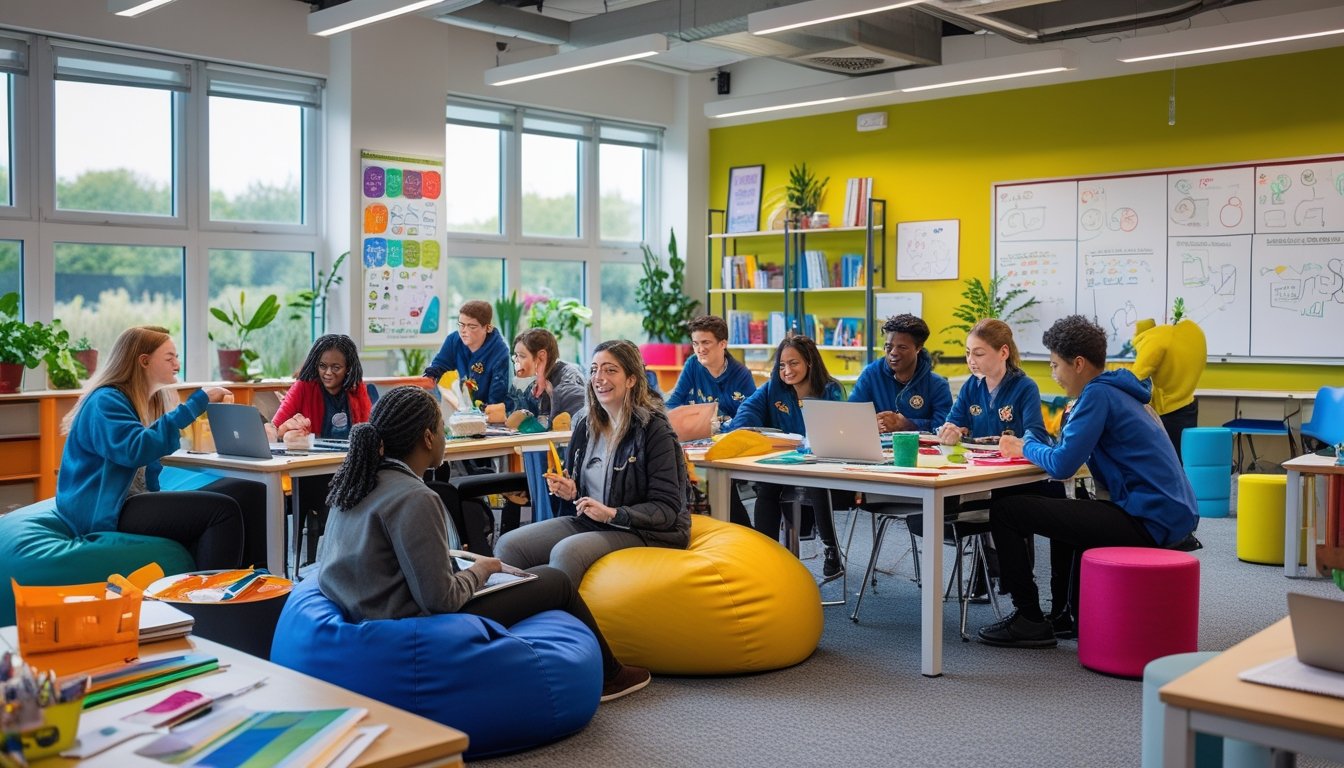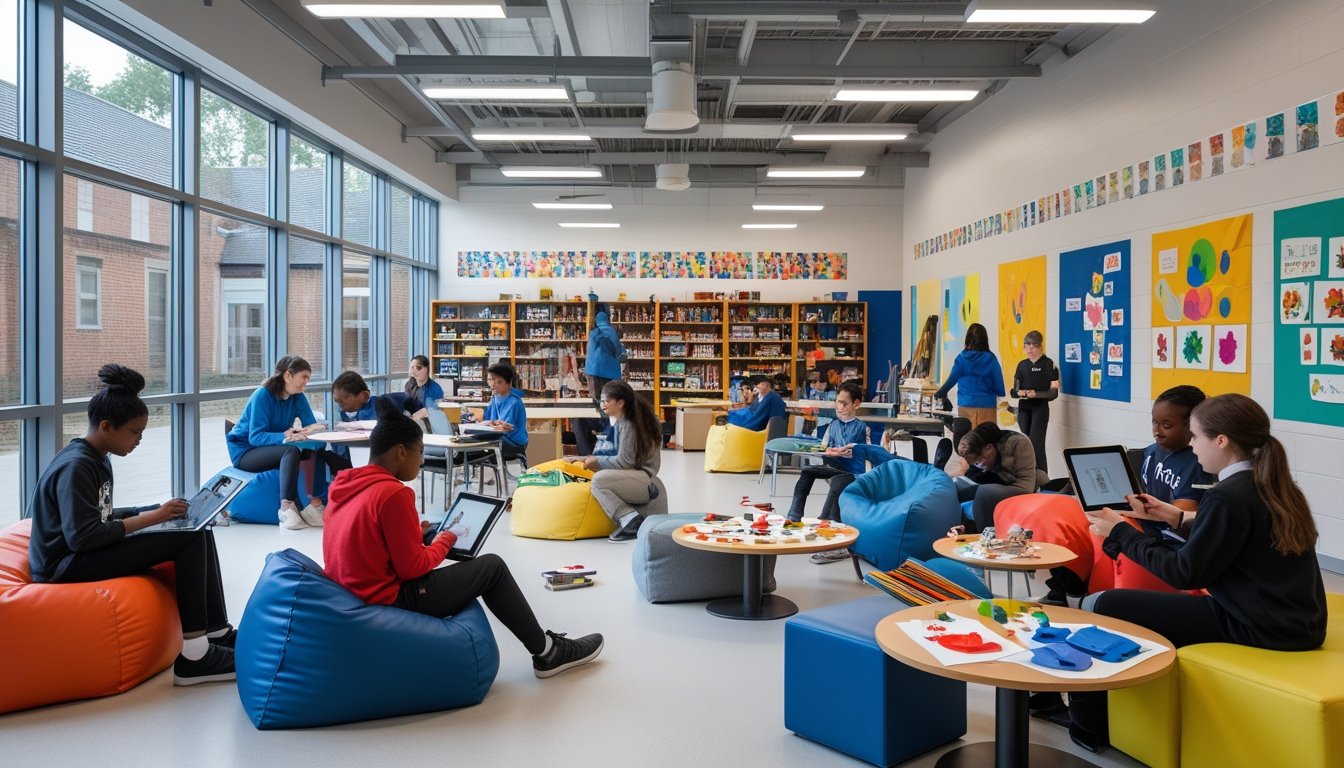Late updated: 19 Jun 2025 13:06
Written by:
Exploring Creative Learning Spaces in the UK: Innovations and Opportunities
Creative learning spaces are revolutionising education in the UK, transforming traditional environments into vibrant hubs of imagination and interaction. These innovative spaces are designed not just to accommodate traditional learning but to spark creativity and collaboration among students. Such environments foster critical thinking and engagement by integrating elements like colour, texture, light, and sound.

At the heart of this transformation are institutions like the Roden Centre for Creative Learning at the National Gallery in London. This centre stands out as a shining example of how thoughtfully designed spaces can serve diverse learners and make art accessible to all. By combining creativity, learning, and discovery, the Roden Centre has become a cultural hub attracting visitors of all ages and abilities.
As we dive deeper into the significance of creative learning spaces, we invite you to explore how these environments impact student engagement and the elements that make them effective. Through this exploration, we can appreciate the potential of these spaces to redefine our educational landscape.
Key Takeaways
- Creative learning spaces enhance student creativity and engagement.
- The Roden Centre is an example of integrating art and learning.
- Such spaces redefine educational environments by fostering inclusivity.
Defining Creative Learning Spaces in the UK

Creative learning spaces in the UK are designed to enhance student engagement and foster innovation. They offer flexible and inclusive environments that nurture creativity, cater to diverse backgrounds, and encourage collaboration and imagination in educational settings.
Key Characteristics of Creative Environments
Creative learning spaces often feature adaptable layouts and advanced technology. These environments support various teaching styles, such as group work and individual study, by providing movable furniture and digital tools. This versatility is crucial in accommodating different learning preferences and activities.
Moreover, such spaces typically include elements like natural lighting, inspirational visuals, and accessible resources that help to stimulate sensory engagement. The integration of these factors contributes significantly to a positive and stimulating atmosphere, essential for fostering a creative mindset.
Role of Creativity and Imagination
Incorporating creativity and imagination in learning spaces encourages students to think beyond conventional boundaries. This aspect of design invites students to explore new ideas and develop critical thinking skills.
For example, areas dedicated to hands-on projects and artistic expression can inspire learners to innovate. Using art, storytelling, and multimedia, students are able to visualise concepts and express thoughts uniquely. Encouraging imagination in this way promotes a deeper engagement with the material, transforming learning into an active rather than passive experience.
Inclusive Approaches and Diverse Backgrounds
Inclusivity in learning environments ensures that all students, regardless of their backgrounds, feel valued and supported. Creative learning spaces in the UK incorporate diverse cultural perspectives through curricula and design elements, fostering a sense of belonging among students.
Accommodations for various learning needs, such as accessibility features for students with disabilities, are also key components. By adopting inclusive approaches, these spaces not only meet an array of educational requirements but also prepare students to operate in a multicultural world.
Understanding and integrating differences enhances the richness of the educational experience, empowering all students to reach their full potential.
Methods and Impact of Creative Learning Spaces

In our exploration of creative learning spaces in the UK, several methods stand out: integrating curriculum and collaboration, encouraging play-based and experiential learning, utilising virtual reality and digital innovation, and enhancing cultural exchange and language proficiency. These elements collectively transform traditional education by fostering creativity and enhancing student engagement.
Curriculum Integration and Collaboration
Integrating creativity into the curriculum encourages collaboration and cross-disciplinary projects. By fusing subjects like art and science, students experience the interconnectedness of knowledge. UAL and similar institutions frequently use such methods to inspire holistic learning.
Collaborative projects harness diverse perspectives, allowing students to engage in meaningful dialogue and explore new ideas. Methods include group workshops and peer-led activities, which cultivate a shared learning environment. This approach not only builds creative processes but also enhances critical thinking skills, essential for the 21st-century learner.
Play-Based and Experiential Learning
Our classrooms are being transformed through play-based and experiential learning. These methods allow students to engage with content through hands-on activities, making abstract concepts observable and understandable.
Through the creative process, students interact with real-world scenarios familiar to many living experiences. Learning through play fosters curiosity and promotes a risk-taking approach, essential for innovative thinking. This approach transforms learning from passive reception to active participation, increasing student engagement considerably.
Virtual Reality and Digital Innovation
Incorporating virtual reality (VR) and other digital tools into learning creates immersive environments that revolutionise education. These tools offer students experiences impossible to achieve in a traditional classroom setting, such as exploring ancient civilisations or simulating complex scientific processes.
Digital innovation enables interactive learning, where students actively participate in their education. By using VR and digital platforms, educators can provide experiences that cater to diverse learning styles, making learning accessible and exciting. This not only enhances knowledge retention but also prepares students for a digital future.
Cultural Exchange and Language Proficiency
Cultural exchange programmes increase our students' global awareness and understanding. By participating in exchanges, children can experience different cultures, promoting language learning and boosting language proficiency.
These exchanges enrich students' perspectives, encouraging empathy and understanding of diverse cultures. As they improve their language skills, students become better communicators, equipped to engage in a globalised world. Such experiences also contribute to building confidence, preparing learners for both academic and personal growth.
Frequently Asked Questions

Exploring creative learning spaces in the UK involves understanding their distinctive features, their impact on student engagement, and the integration of technology into the learning environment. Additionally, the adaptation of campus facilities and funding opportunities play a significant role in supporting innovative educational landscapes.
What are the key characteristics of innovative learning environments in British educational institutions?
Innovative learning environments in the UK are designed to be flexible, vibrant, and inclusive. These spaces often include adaptable furniture, technology integration, and areas that encourage group collaboration. They aim to foster creativity, critical thinking, and active learning.
How are creative learning spaces enhancing student engagement and collaboration in the UK?
Creative learning spaces in the UK promote active participation and teamwork. By providing students with environments that support both individual and group activities, these spaces enhance engagement through interactive elements, such as smartboards and digital resources. This setup encourages collaboration and sustained interest in subjects.
In what ways do interactive and flexible classrooms support diverse learning styles in UK schools?
Flexible classrooms address diverse learning needs by offering a variety of seating options and technology-enabled tools. These environments allow students to work independently, in pairs, or in groups, catering to visual, auditory, and kinaesthetic learners. Such flexibility ensures that every student has access to resources that best suit their learning style.
What role does technology play in the development of creative learning spaces in the UK?
Technology plays a pivotal role in shaping creative learning environments in the UK. Digital tools, interactive displays, and online resources enhance the learning experience, making it more engaging and accessible. Technology-equipped spaces also provide opportunities for students to develop digital literacy skills essential for future careers.
How are UK universities adapting their campus facilities to foster experiential and project-based learning?
UK universities are redesigning their campuses to support experiential and project-based learning by introducing multipurpose labs, collaborative workspaces, and real-world simulation environments. These spaces enable students to apply theoretical knowledge in practical settings, encouraging innovation and problem-solving.
What funding opportunities are available for the creation and improvement of creative learning spaces within the UK education sector?
In the UK, various funds and grants are available to support the development of creative learning spaces. Government initiatives, educational charities, and private foundations provide financial assistance for schools and universities looking to enhance their environments, fostering educational innovation and improvement.
